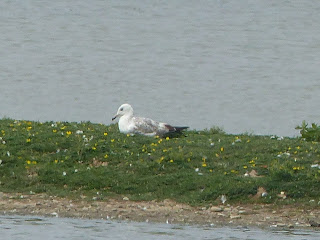This morning's ringing session at Linacre was a quiet one, with just 10 birds caught, but within that small number, we were very lucky to record juvenile birds, born this year, of 4 species (
Blackcap,
Garden Warbler,
Blue Tit and
Mistle Thrush). Of these 4 species, 3;
Blackcap,
Garden Warbler and
Mistle Thrush, were the first records of young birds for 2017, and prove breeding on site. The Blue Tits included new juvenile birds, unfortunately, not ones ringed in the boxes. The 4th species in the title was
Common Buzzard. We didn't ring any chicks (unfortunately), but we did spot an adult bird carrying food into the woods, which, again, is positive proof of breeding. This last record, is particularly pleasing, as it's the first time I've recorded breeding of this species at Linacre.
Other birds caught this morning were:
Bullfinch (a new male and a retrap female) and a retrap male
Nuthatch.
In between the net rounds we recorded a couple of
Swifts, a
Grey Wagtail (thanks David), a
House Martin, a
Kestrel, a
Brown Hare, a
Sparrowhawk and a
Chimney Sweeper (moth - see
here for details).
We also took the ladders with us today, so we could check the owl boxes. The
Mandarin Duck eggs we found in April (see
here) had gone (hopefully hatched and fledged, and not predated), and the other boxes (including the
Little Owl box), were all empty.






















